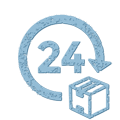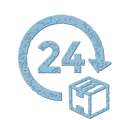Working with Heat Resistant & Cold Working Metals
Coolant
It is important to control heat buildup, the major cause of warpage. Suggested coolants are Keycool 2000 or Prime Cut. Whatever lubricants used for machining, it should not contain sulphur. Sulphur can effect the performance of many sealed electronic parts.
Tooling:
T-15 Alloy, such as Vasco Supreme – manufactured by Vanadium Alloys Company, M-3 Type 2 such as Van Cut Type 2 – manufactured by Vanadium Alloys Company, Congo – manufactured by Braeburn.
For machining with carbide tools, a K-6 manufactured by Kenemetal, Firthite HA manufactured by Firth Sterling, or #370 Carboloy could be used or a K2S manufactured by Kennemetal, or a Firthite T-04 manufactured by Firth Sterling would be satisfactory. One thing of prime importance is that all feathered or wire edges should be removed from the tools. They should be kept in excellent condition by repeated inspection.
Turning
If steel cutting tools are used, try a feed of approximately .010″ to .012″ per revolution and a speed as high as 35/FPM could probably be attained. Some of the angles on the cutting tools would be as follows:
When cutting off, high speed tools are better than carbide tools and a feed of approximately .001″ per revolution should be used. The Cutting tools should have a front clearance of about 7° and a fairly big tip – larger than 25° would be helpful.
Drilling:
When drilling a 3/16 ” diameter hole, a speed of about 40/FMP could possibly be used, and the feed should be about .002″ to a .0025″ per revolution, for a 1/2″ hole, approximately the same speed could be used with a feed of about .004″ to .005″ per revolution,. The drills should be as short as possible and it is desirable to make a thin web at the point by conventional methods. By conventional methods, we mean do not notch or make a crank shaft grind. It is suggested that heavy web type drills with nitrided or electrolyzed surfaces be used. The hole, of course, should be cleaned frequently in order to remove the chips, which will gall, and also for cooling. The drill should be ground to an included point angle of 118° to 120°.
Reaming
Reaming speeds should be half the drill speed, but the feed should be about three times the drill speed. It is suggested that the margin on the land should be about 005″ to .010″ and the chamfer should be .005″ to .010″ and the chamfer angle about 30°. The tools should be as short as possible, and have a slight face rake of about 5° to 8°.
Tapping
In tapping, a tap drill slightly larger than the standard drill recommended for conventional threads should be used because the metal will probably flow into the cut. It is suggested that on automatic machines, a two or three fluted tapping tool should be used. For taps below 3/16″, the two fluted would be best. Grind the face hook angle to 8° to 10°, and the tap should have a .003″ to .005″ chamfered edge, if possible. If binding occurs in the hole in tapping, the width of the land may be too great, and it is suggested that the width of the heel be ground down. Again, it us suggested that nitrided or electrolyzed tools be used. Speed should be about 20/FPM.






